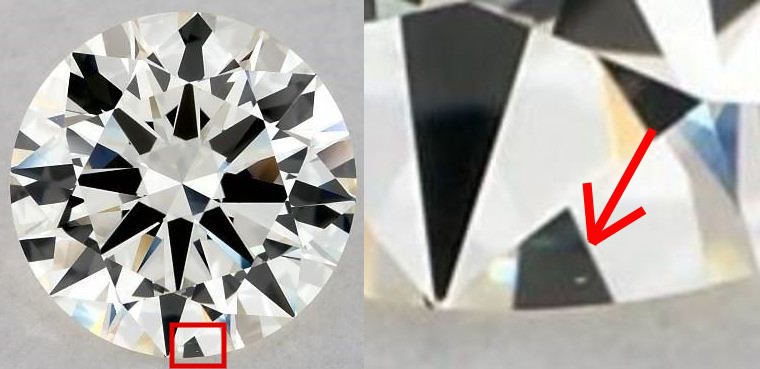
What is a VVS Diamond?
A VVS diamond is a type of diamond with exceptional clarity, which means that it has very few visible inclusions or blemishes when viewed under 10x magnification. Gemologists use the grade VVS, which stands for “Very, Very Slightly Included,” to classify the clarity of diamonds.
To be classified as a VVS diamond, a gemstone must have inclusions or blemishes that are difficult to detect even under 10x magnification. These inclusions or blemishes may be present, but they are so small and inconspicuous that they do not affect the diamond’s beauty or brilliance.
VVS diamonds are one of the highest clarity grades available, and they are highly sought after by collectors and enthusiasts for their rarity and beauty. They are also popular choices for engagement rings and other fine jewelry pieces due to their exceptional quality and beauty.
Diamonds come in all shapes and sizes. You will realize it more when you go deeper into the science of diamonds. How seemingly two diamonds that spark the same for you, yet they can differ a lot from each other.
A Diamond’s quality is based on its 4 C’s (Carat, Cut, Clarity, Color). The 4 C’s does greatly affect the brilliance and spark of the diamond.
Let’s have a quick overview of the 4 C’s of the diamonds:
Carat: Weight of the diamond.
Cut: Shape and quality of the diamond. This factor is the most important when it comes to the sparkle and glow of the diamond.
Clarity: The amount and size of inclusions or blemishes in a diamond.
Color: Color of the diamond. The whiter the diamond, the higher grade it will be.
For this article, we will focus on Diamond Clarity and how its different grades can have different characteristics.
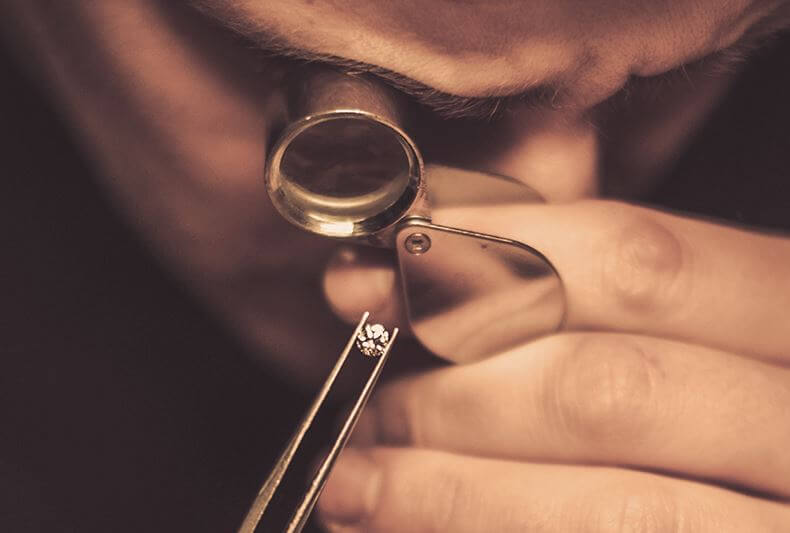
Diamond Clarity:
As we discussed above, diamond clarity tells us the amount of the inclusions and flaws in a diamond.
Perfect or Flawless Diamonds with no inclusions are extremely rare. The imperfections in natural diamonds can be due to air bubbles, fractures or internal graining. And they can seriously affect the sparkle of the diamond.
The diamonds graded higher are the ones with no flaws or with tiniest inclusions. The inclusions in them are hard to spot for the unaided eye even through a loupe. Sometimes the experts may also fail at finding the inclusions in such diamonds.
The diamonds in the lower grade indicate the number of inclusions in it. Some of the inclusion can be visible to the naked eye and some may not.
Have a look at this grading scale to help you understand the different clarity grades:
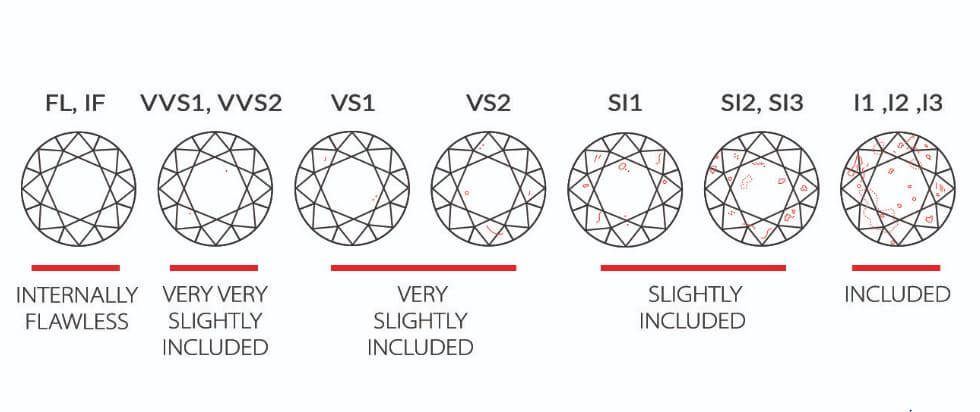
Clarity Grading Scale:
The Gemological Institute of America (GIA) developed the clarity grading scale, which is widely used in the diamond industry. The scale ranges from FL (flawless) to I3 (included), with 11 grades in total. Here’s a breakdown of the clarity grading scale:
-
- FL (Flawless): A diamond with no internal or external flaws or blemishes visible under 10x magnification.
- IF (Internally Flawless): A diamond with no internal flaws visible under 10x magnification but may have some external blemishes.
- VVS1 (Very, Very Slightly Included 1): A diamond with extremely small inclusions that are difficult to see under 10x magnification, even for a skilled grader.
- VVS2 (Very, Very Slightly Included 2): A diamond with slightly larger inclusions than a VVS1 diamond but still difficult to see under 10x magnification.
- VS1 (Very Slightly Included 1): A diamond with small inclusions that are visible under 10x magnification but are not visible to the naked eye.
- VS2 (Very Slightly Included 2): A diamond with slightly larger inclusions than a VS1 diamond but still not visible to the naked eye.
- SI1 (Slightly Included 1): A diamond with inclusions that are easily visible under 10x magnification but are still not visible to the naked eye.
- SI2 (Slightly Included 2): A diamond with larger inclusions than an SI1 diamond, some of which may be visible to the naked eye.
- I1 (Included 1): A diamond with inclusions that are easily visible to the naked eye.
- I2 (Included 2): A diamond with large and numerous inclusions that are easily visible to the naked eye and may affect the diamond’s transparency and brilliance.
- I3 (Included 3): A diamond with very large and numerous inclusions that severely affect the diamond’s transparency and brilliance.
Each of these categories is further divided into subcategories, such as VVS1 and VVS2, to provide a more precise grading of a diamond’s clarity.
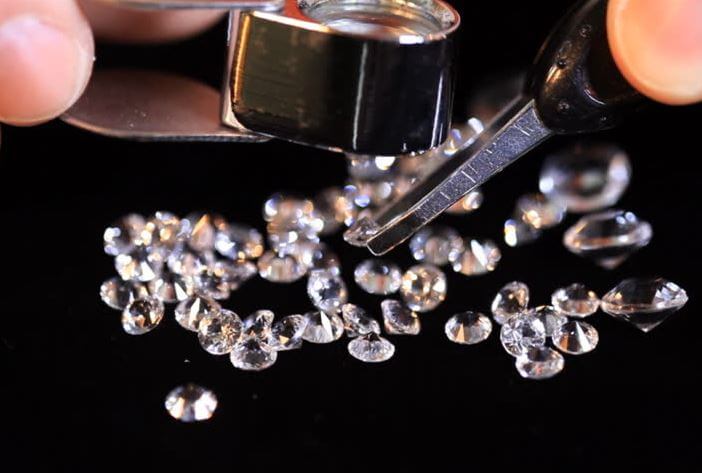
Difference between VVS1 and VVS2 Diamond Clarity:
VVS1 and VVS2 are two different grades of diamond clarity that fall under the very, very slightly included (VVS) category. The difference between VVS1 and VVS2 diamond clarity is based on the size, location, and number of inclusions found within the diamond.
VVS1 diamonds are considered to have fewer and smaller inclusions than VVS2 diamonds. These inclusions are also less noticeable in VVS1 diamonds as they tend to be located towards the edge or crown of the diamond. This makes VVS1 diamonds slightly more valuable than VVS2 diamonds.
On the other hand, VVS2 diamonds may have slightly larger inclusions compared to VVS1 diamonds. These inclusions may also be located more towards the center of the diamond, making them more visible. However, diamond buyers and experts still consider them as diamonds of excellent clarity and often prefer them over VVS1 diamonds due to their affordability.
Overall, the difference between VVS1 and VVS2 diamond clarity is minimal and may not be noticeable to the untrained eye. It ultimately comes down to personal preference and budget when choosing between the two grades of clarity. It’s important to note that both VVS1 and VVS2 diamonds are of excellent quality and are considered to be high-end options.
Let’s look at the Pros and Cons of VVS Diamonds:
Pros:
- High Clarity: VVS diamonds have an incredibly high level of clarity, making them visually stunning and highly valuable. The internal flaws are almost impossible to detect without magnification, making them an excellent choice for those who value a high level of clarity in their diamond.
- Brilliance: Diamonds are valued for their brilliance, and VVS diamonds are no exception. The high level of clarity in VVS diamonds allows for a maximum amount of light to pass through the diamond, creating a dazzling display of fire and brilliance.
- Rarity: VVS diamonds are rare and highly coveted, making them a valuable investment for those who are looking for a unique and exclusive diamond.
- Durability: Diamonds are one of the hardest substances on Earth, making them highly durable and resistant to scratches and chips. VVS diamonds are no exception and can withstand daily wear and tear without losing their brilliance and clarity.
Cons:
- High Cost: VVS diamonds are highly valued and expensive due to their rarity and superior clarity. The high cost of these diamonds may be a significant disadvantage for those who are on a budget.
- Overrated Clarity: While VVS diamonds are considered to have superior clarity, the difference between a VVS diamond and a lower clarity grade may not be easily visible to the naked eye. Some people may not feel that the difference in clarity justifies the higher cost of a VVS diamond.
- Limited Availability: VVS diamonds are rare and difficult to find. This means that the selection of VVS diamonds is limited, and it may be challenging to find the exact diamond that you want.
- Reduced Brilliance: In some cases, a VVS diamond may not be as brilliant as a lower clarity diamond due to the inclusions being closer to the surface of the diamond. This can affect the overall beauty and sparkle of the diamond, despite its superior clarity grade.
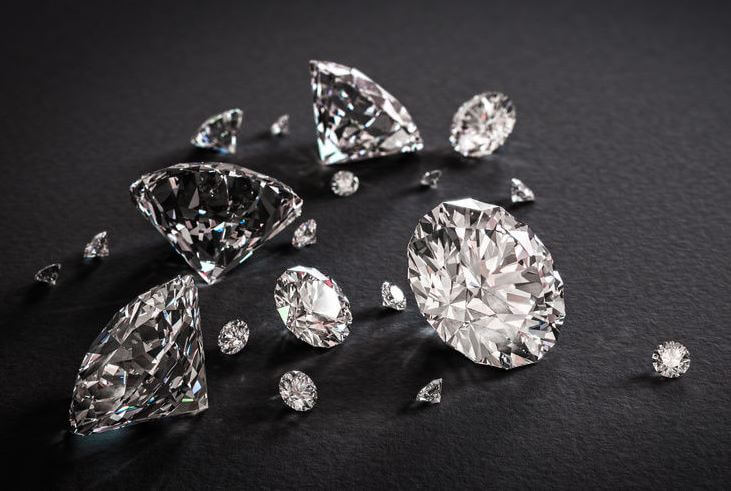
Should you buy a VVS Diamond?
Whether or not you should buy a VVS diamond ultimately depends on your personal preferences and budget. VVS diamonds are undeniably stunning and will likely retain their value over time. However, they come with a higher price tag and may not be necessary for everyone.
If you are someone who values a diamond with minimal flaws and wants to invest in a high-quality stone that will last a lifetime, then a VVS diamond may be a great option for you. On the other hand, if you are working within a tight budget or do not mind a few visible inclusions in your diamond, then a lower clarity grade may be a better choice.
It’s also important to keep in mind that the differences between a VVS diamond and a lower clarity diamond may not be easily noticeable to the naked eye. If you are unsure whether a VVS diamond is worth the investment, it may be helpful to view diamonds of varying clarity grades side-by-side to see the differences for yourself.
When considering a VVS diamond, it’s also important to make sure you are purchasing from a reputable and trusted jeweler. Ensure that the diamond comes with a certificate from a recognized grading laboratory, such as the Gemological Institute of America (GIA), which will provide an objective assessment of the diamond’s clarity grade.
Ultimately, the decision to purchase a VVS diamond comes down to your personal preferences and budget. Not everyone may find VVS diamonds necessary or affordable, despite their reputation for beauty and quality. By considering your priorities and shopping with a trusted jeweler, you can make an informed decision on whether a VVS diamond is the right choice for you.

Shane Carry, the enigmatic voice behind the captivating content of TheDiamondsRing.com, He is a seasoned gemologist and writer renowned for his expertise in the field of diamonds. With a career spanning over two decades, Carry has established himself as a leading authority on gemstones, garnering acclaim for his insightful analysis and compelling narratives.
Carry’s passion for diamonds was ignited at a young age, fueling a lifelong pursuit of knowledge in gemology and jewelry design. He holds degrees in both Gemology and Jewelry Design from prestigious institutions, where he honed his skills and deepened his understanding of precious stones.